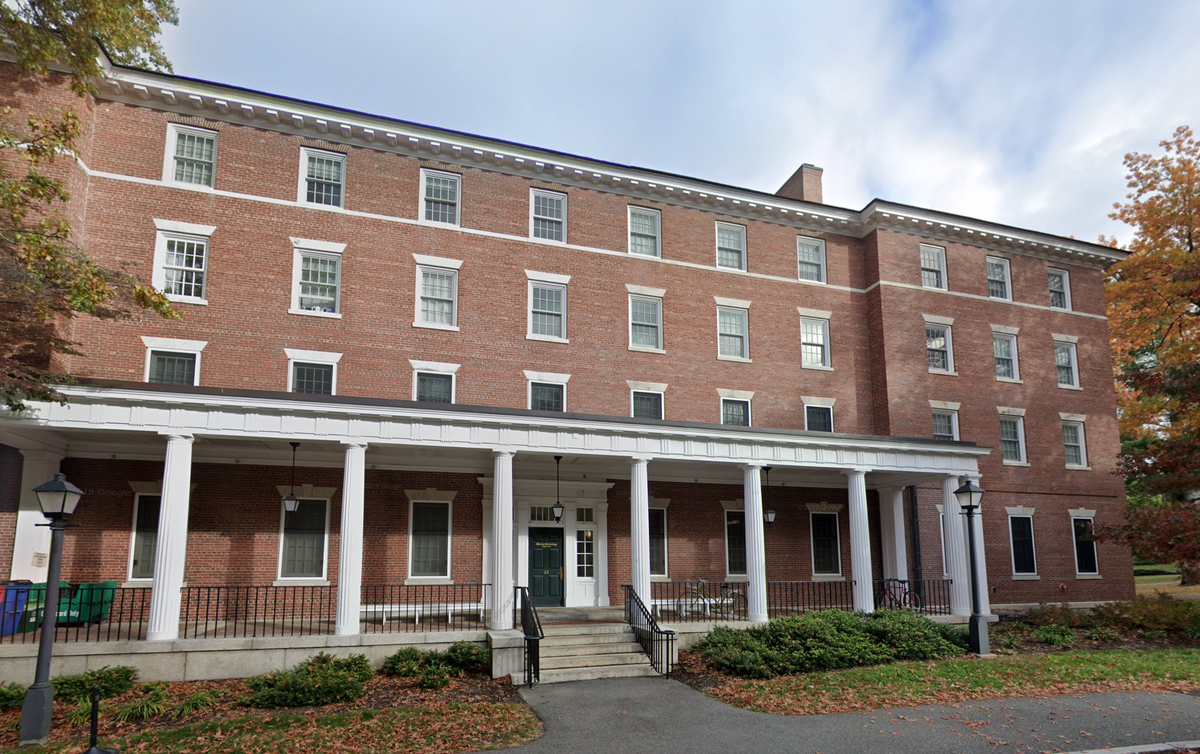An Ode to Morrow
Assistant Opinion Editor Dustin Copeland ’25 pays tribute to The Student’s home base with a brief description of its architectural history.


When Dwight Morrow graduated from Amherst in 1895, he was voted “most likely to succeed” by every single member of the graduating class excepting only himself. Morrow voted for his roommate, Calvin Coolidge, who would go on to appoint Morrow to the U.S. ambassadorship in Mexico after becoming president of the United States. Morrow was also a partner at J.P. Morgan, and a U.S. Senator from New Jersey. The distinguished alumnus would, together with his wife Elizabeth Reeve Cutter (herself acting president of Smith College for a time) donate the funds that were used to build Morrow Dormitory in 1925, which was constructed over the course of the following year.
Morrow Dormitory is McKim, Mead, & White at the height of its dominance over campus. The architecture firm is probably more influential than any other single entity in terms of its effect on Amherst’s physical campus: from 1894’s Fayerweather Hall until the late ’50s, the firm had a choke-hold on campus architecture. Everything from Morrow to the Powerhouse to Webster Hall and even the War Memorial is theirs: in other words, McKim, Mead, & White had its hands in all of the most beautiful, lasting, and important architecture on our campus.
By the end of their tenure, the firm was well past its prime, something that shows painfully in buildings like Chapin Hall and the unequivocally depressing Mead Art Museum. Such uninspired gestures at austerity as their atrocious white-painted stone facsimile and tragically boring brickwork truly aren’t fit to bear the name of the storied firm; indeed, I think it might be justified to raze these mid-century examples of artistic doldrums purely on the basis of their sullying of McKim, Mead, & White’s otherwise unimpeachable legacy.
The mid-1920s were one of the many peaks of that legacy: the Harvard Business School and Olin Library at Wesleyan University, as well as Manhattan’s Savoy-Plaza Hotel and what is now the former headquarters of the New York Department of Education, were all completed within two years of Morrow’s construction. Morrow, then, stands in a venerated catalog, part of the McKim, Mead, & White neoclassical oeuvre that would define contemporary American architecture.
On a macro level, Morrow is perfectly competent. The recessed central mass is flanked by two projections that divide the building into visual thirds, breaking up an otherwise over-imposing rectangle which — while it worked on the smaller scale of North and South Halls — would come off just too heavy on Morrow. This three-way division reflects Fayerweather across the quad, foreshadowing the manifold progeny of that defining structure. Furthermore, the understated dorm balances Morris Pratt Dormitory’s extravagance across Webster Circle, and the vast front porch with its fluted columns brings a noble luxury that parallels Mo Pratt while staying understated in tone.
But the true joy of Morrow lies in the details. Every little piece of the building is so perfectly executed as to elevate the structure far past plainness. The brickwork is masterful, with courses of headers (the short side of the brick) breaking up the otherwise-monotonous expanse of stretchers (the long side) to keep the facade visually light while mirroring the brickwork of North and South Halls. Then there is the band of stone that underlines the top row of windows, unifying the stone that speckles Morrow’s brick. The lintels (structural beams that form the top of a window-frame) are made of the same stone and splay outwards to lend legitimacy to the tone conveyed by that porch. A denticulated cornice tops the building with grandeur befitting the careful construction. I urge you to spend some time with Morrow, either from Webster Circle or even below it on Val Quad — the longer you look at it, the better it gets.
Of course, I love Morrow not just for its indisputable architectural significance. The interior design is wonderful, too, with a 2006 restoration refurbishing the gorgeous wood that clads common rooms and floors across the building. But most importantly of all, Morrow is home to the very student newspaper in your hands (or on your screen). Our newsroom sits within Morrow’s basement, a baby-blue home that will sit unused for the next month or so. The semester draws to a close, and with it goes the newspaper for now. Morrow has been an amazing home for the newspaper this semester, a warm place for late nights of joy and stress in the name of publishing. In the spring, I’ll return to Morrow, and we will resume the cycle of writing, editing, and publishing that has defined my time on campus this semester. So, thank you to the building that gives The Student its shelter, and I promise we’ll be back soon.



Comments ()